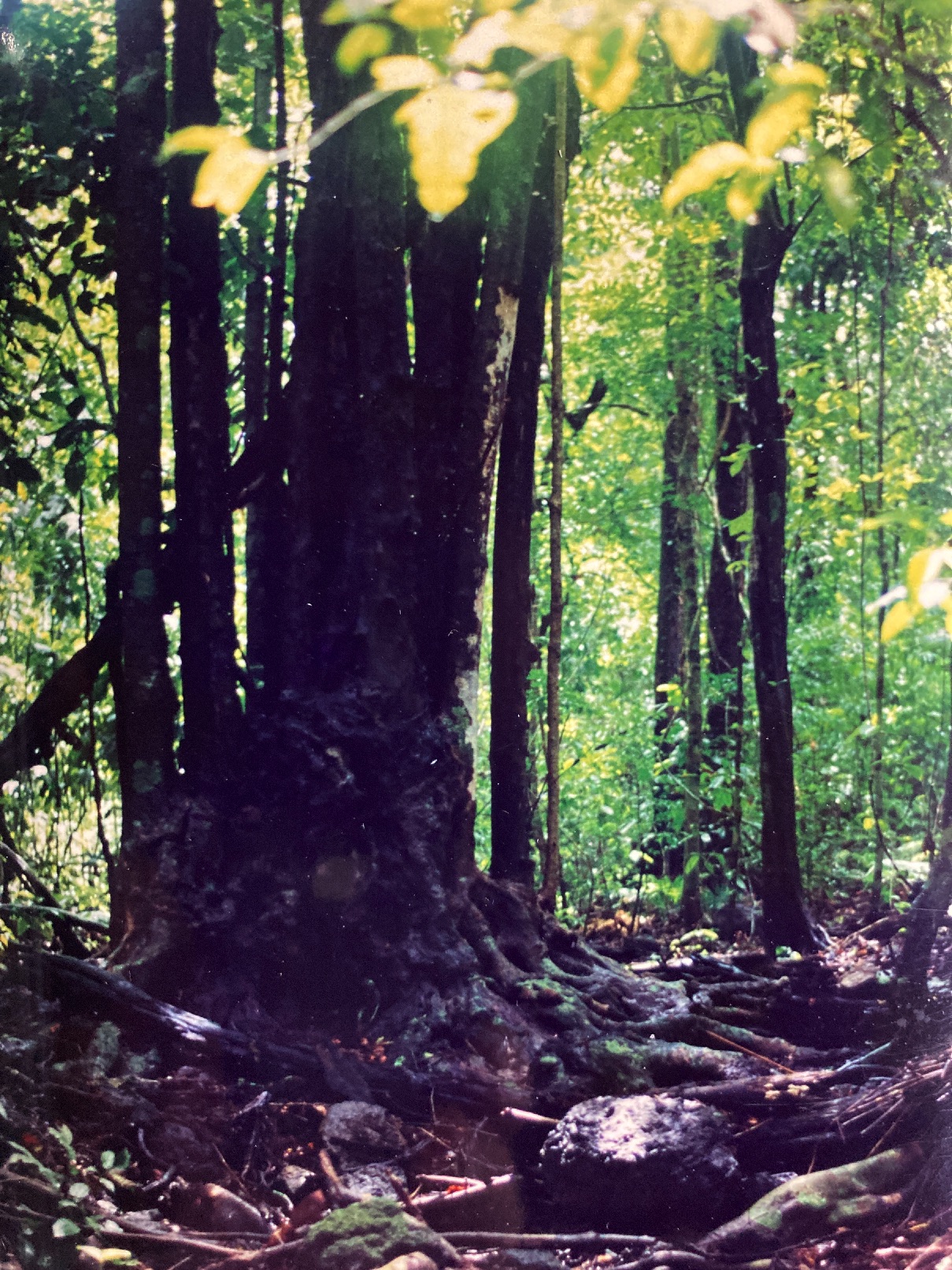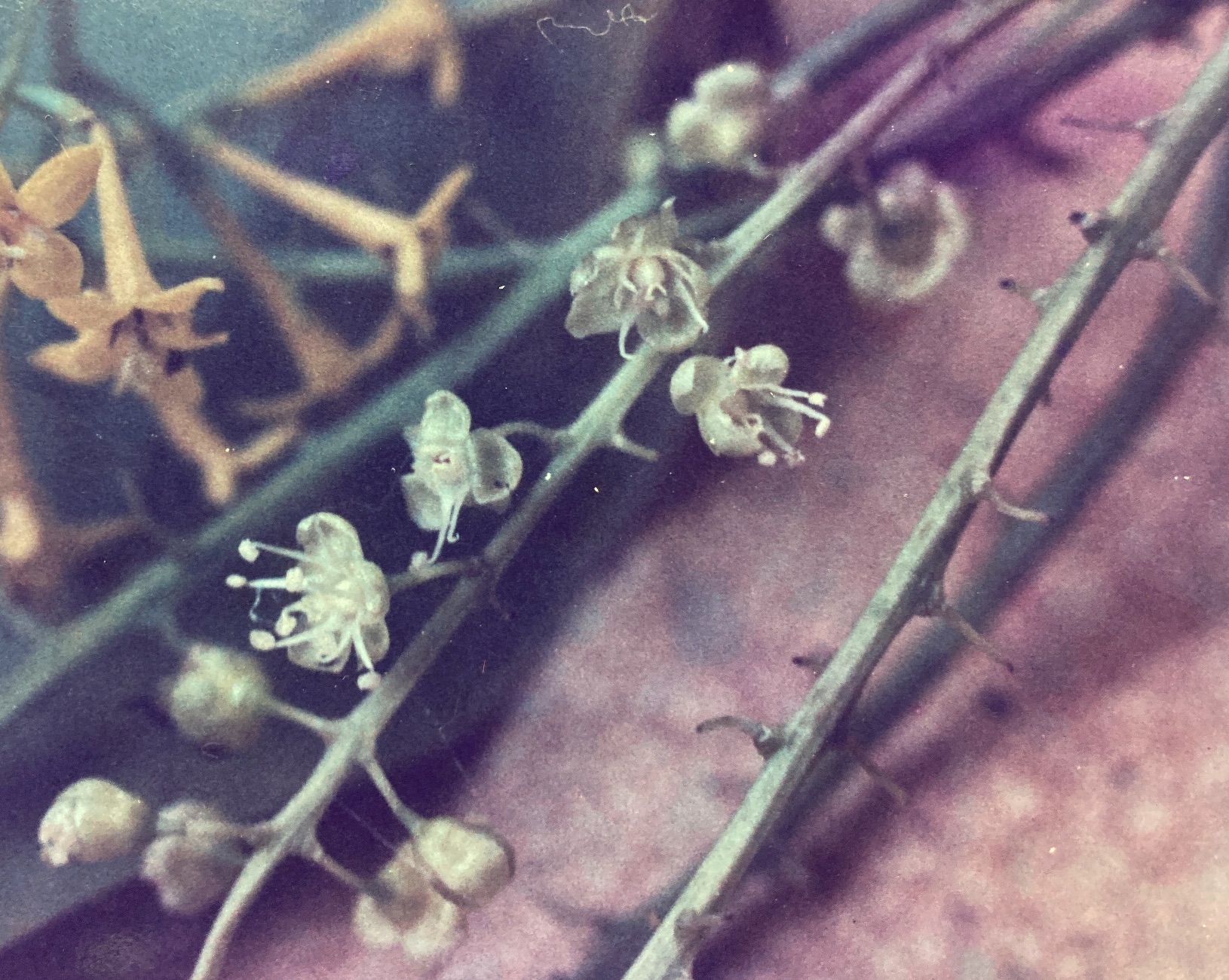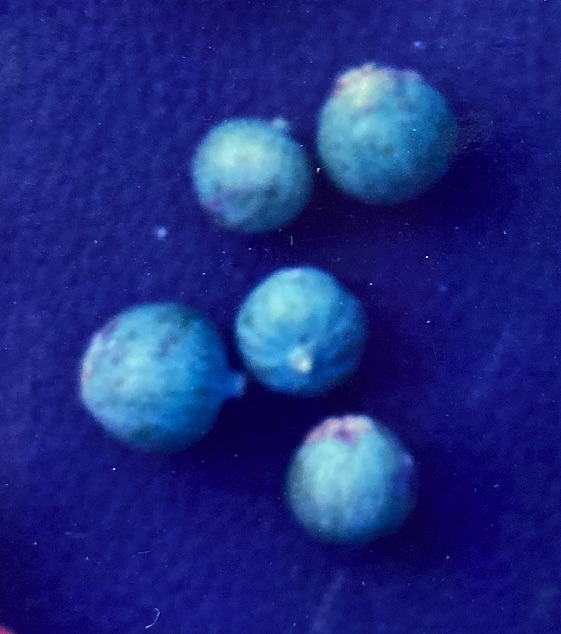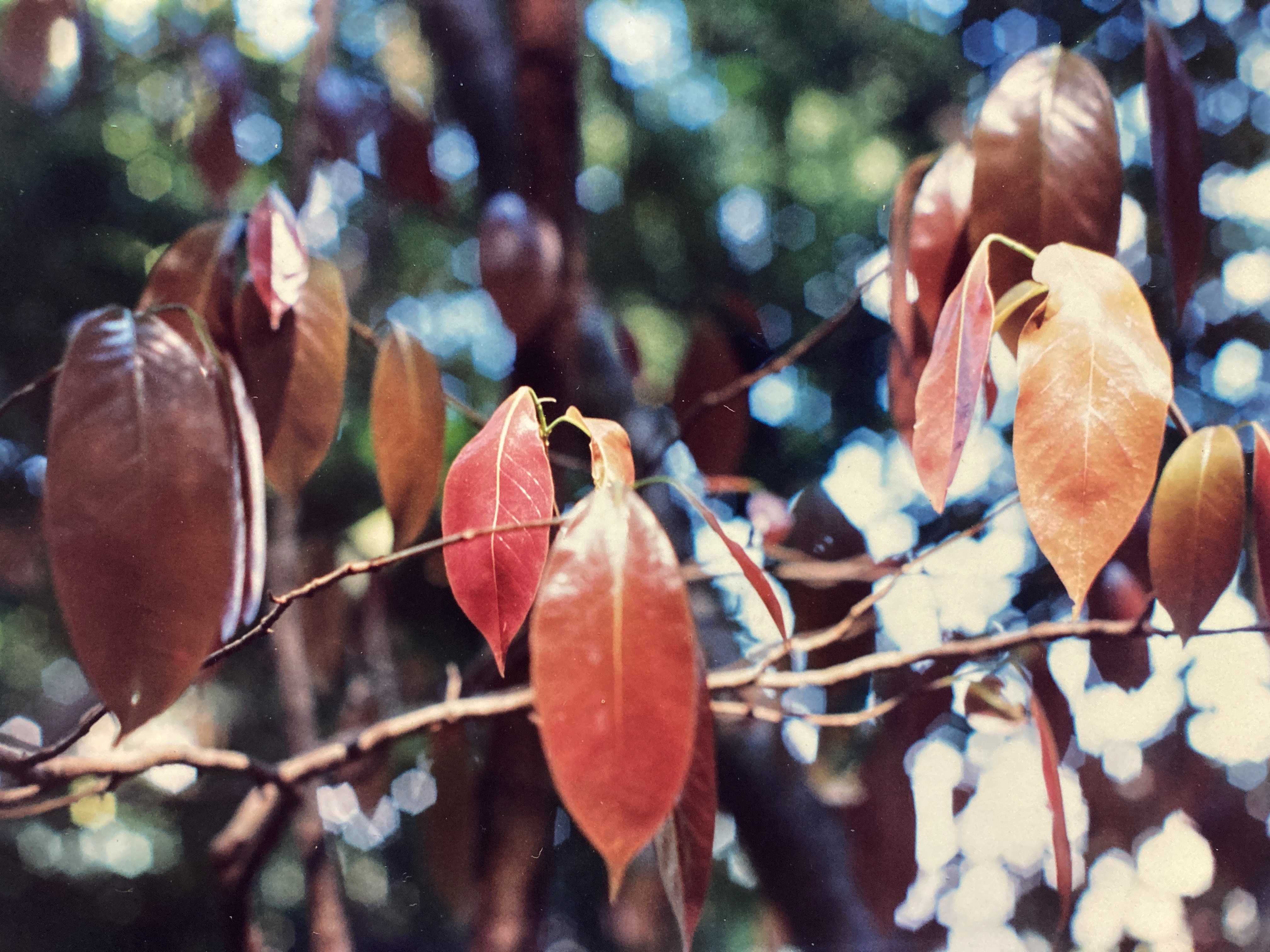Coccoloba padiformis Meisner
PAPATURRO
Common evergreen understory tree (10-15 m) known from all of Manuel Antonio National Park’s primary forest habitats (except for those within the extreme coastal zone), where it makes up an integral component of the dark, lower forest strata. Papaturro produces multiple trunks that emerge from a common root stock – an unusual growth form for a tree of its size. The coppery pink color of new Papaturro foliage is among the most striking of hues to be found in the tropical forest. These trees also produce abundant, annual crops of small fruits that are an important part of the local food chain.
Description: Papaturro trees typically grow several, similarly sized trunks (20 cm). At soil level they unite, forming a solid disk or platform of wood as a common base and root system. As the stems rise into the canopy, they slowly taper, diverge and arc toward different sections of the forest understory, forming a thin and incomplete, umbrella-shaped crown. Each bole possesses an irregular, knobby surface that is sheathed by a layer of smooth, deep brown bark. With so many trunks, Papaturro resembles an overgrown shrub or a stand of bamboo, though its stature confirms its arboreal status. Branching in this species is minimal. Papaturro leaves (17-21 cm by 7 cm) are simple and alternately arranged. Their leathery blades are smooth, elliptically shaped, and end in well developed drip-tips. A pronounced mid-rib runs the length of the blade and gives rise to an intricate, net-like system of secondary veins. The characteristically thick and dark petiole (2 cm) is flanked by a long, papery stipule that is found clinging to the twig. At different times during the dry season (December through April), individual Papaturro trees initiate their reproductive cycle by shedding their foliage. They then extend limp, translucent, and glossy new leaves. Striking for their coppery or orange pastel color, these leaves contrast strongly with the dull greens and browns of the forest understory and create one of the most impressive displays to be seen in these woods.
Simultaneously, the trees grow long (10-20 cm), stringy racemes of pale-green flowers that can be seen dangling from leaf axils. Each small, petalless blossom (4 mm) is composed of five sepals, 9 slightly-protruding white stamens, and a bulb-like central pistil with a three-part stigma. Flowering periods in Papaturro (following the pattern of foliage renewal) are highly unsynchronized events in which individual trees participate for only about three out of a prolonged 16 week interval, extending from early January through April.
Fruits appear on the same racemes soon after flowering ceases, and stringy bunches of them can be observed dangling amid the canopy. The fruits begin as green-skinned, spherical orbs (1 cm), each marked by a distinctive, distally-located, point or snout. Many – if not most – of these pea-sized drupes are aborted during this early stage of their development. Those that persist continue to grow, becoming more irregular as their outer skin swells and softens. Ripe fruits (1.5 cm) boast a thick layer of soft, purple pulp surrounding a single, spherical seed. Papaturro harvests are prolonged, annual events (lasting from February through May), though individual trees participate for only a few weeks of this time.
Similar Species: Papaturro trees are unique in their tendency to form multiple trunks of uniform diameter and large size.
Natural History: Lacking bright colors and strong fragrances, Papaturro flowers appear to be ill equipped to attract the insects that are necessary for their successful pollination. The coincidence in time of flowering and leaf renewal invites the speculation that perhaps the contrasting and unusual hues of fresh Papaturro foliage serve the function more usually associated with lavishly-colored flower petals. Insects, initially lured to Papaturro trees by their distinctively colored, translucent leaves, may stumble upon the open flower racemes once brought within close range. The fruits of this species are an important part of the diet of many arboreal mammals, including squirrel and white-faced monkeys, and probably of large birds as well.
Uses: Wright (1978) says that the Coccoloba genus – with some 125 species – includes members whose fruits are edible. This probably holds true for Papaturro, given the affinity that other primates (monkeys) have for them, though – to my knowledge – they have not been tasted.
Distribution: In MANP, Papaturro is found preferentially in the dark, lower strata of the primary forest. Most trailside trees are located on the route to Puerto Escondido. Papaturro ranges from Guatemala to central Panama.
Images: Trunk Leaf Flower Flower&Leaf Fruit




